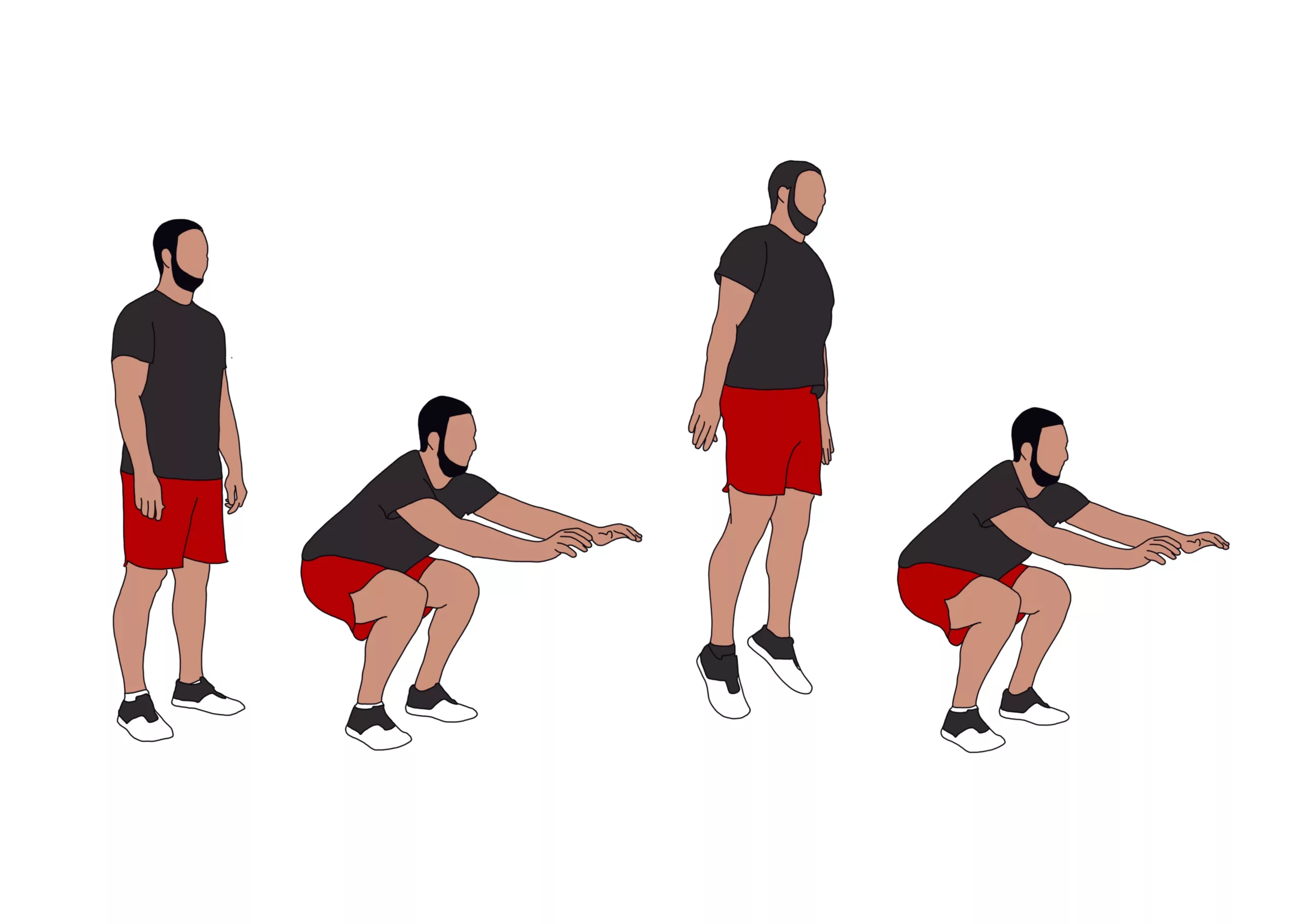Contents of Article
- Summary
- What is the Static SJ-IMTP test?
- How do you conduct the SJ-IMTP test?
- How do you calculate the Dynamic Strength Index (SJ-IMTP test)?
- Considerations for performing the Static SJ-IMTP test
- Is the Static SJ-IMTP test valid and reliable?
- References
- About the Author
Summary
Although the Static SJ-IMTP is an accurate and reliable measure of an athlete’s Dynamic Strength Index, it can be problematic to conduct due to the requirements of complex and expensive equipment (i.e. force platforms). Nonetheless, it provides the strength and conditioning coach or sports scientist with novel information regarding the athlete’s force-producing capacity.
What is the SJ-IMTP test?
Though it appears somewhat complicated, this test is actually very simple and is used to measure an athlete’s Dynamic Strength Index.
The Dynamic Strength Index (DSI), otherwise known as the Dynamic Strength Deficit [1] or the Explosive Strength Deficit [2-4], is simply a ratio between an athlete’s ballistic peak force and their dynamic or isometric peak force [5]. This can be used to identify whether the athlete may require maximal strength training, ballistic strength training, or concurrent training (i.e. a combination) as a stimulus in their programme [6].
It can also be used to reliably measure the performance capabilities in both the lower- and upper body and in recreational, university, and elite athletes.
Firstly, the Static SJ refers to the Static Squat Jump, and the IMTP is the abbreviation for the Isometric Mid-Thigh Pull. The Static SJ is a dynamic ballistic exercise, whilst the IMTP is an isometric exercise. Using both of these tests and comparing the results, the practitioner is able to identify the athlete’s strengths and weaknesses when it comes to producing force.
How do you conduct the SJ-IMTP test?
It is important to understand that whenever fitness testing is performed, it must be done so in a consistent environment (e.g. facility) that is protected from varying weather, and with a dependable surface that is not affected by wet or slippery conditions. If the environment is not consistent, the reliability of repeated tests at later dates can be substantially hindered and result in worthless data.
Required Equipment
Before the start of the test, it is important to ensure you have the following items:
- Reliable and consistent testing facility (e.g. gym or laboratory).
- Force platform with a computer and appropriate software.
- Fixed/immovable barbell fixed at mid-thigh height.
- Wooden or PVC dowel (approx. 100cm in length).
- Performance recording sheet.
Testing Procedure
Warm-up
Participants should thoroughly warm up prior to the commencement of the test. Warm-ups should correspond to the biomechanical and physiological nature of the test. In addition, sufficient recovery (e.g. 3-5 minutes) should be administered following the warm-up and prior to the commencement of the test.
Once the test configuration has been set up, and the test official(s) and the athlete are ready, then the test can begin.
Starting the test
The test should always begin with the athlete’s performing the Static SJ followed by the IMTP, due to the fatiguing nature of the IMTP.
Performing the Static SJ
- The athlete is instructed to stand on the centre of the force platform with the dowel placed across their shoulders and held firmly (i.e. in a back squat position).
- When instructed by the test administrator, the athlete must lower themselves into a semi-squat position (depth dictated by the test administrator, but approximately 45˚ of knee flexion) and pause for 2-3 seconds.
- The test administrator should then initiate the countdown ‘3 – 2 – 1 – GO ‘. On the ‘GO’ signal, the athlete is required to jump as high as physically possible and attempt to land in the same spot on the force platform they took off from.
- 1-3 minutes rest should be provided between each jump.
- This must be repeated for a minimum of three efforts with the best trial determined by the highest peak force being used for further analysis. However, any decrease in peak force during the Static SJ of >50 N should result in a re-trial until three successful jumps have been performed [5].
Performing the IMTP
After completing the Static SJ test, the athlete should be provided with sufficient rest time; 3-10 minutes has been used in previous research [5, 6]. For the IMTP, athletes should obtain self-selected knee and hip angles based on the reports of previous research [5, 7] and ensure the barbell sits on the mid-thigh.
- The athlete is then instructed to step onto the force platform and get into position, gripping the barbell firmly with the use of wrist straps.
- Minimal pre-tension is allowed to ensure there is no slack in the athlete’s body before initiation of the pull.
- The test administrator should then initiate the counted down ‘3 – 2 – 1 – GO ‘. On the ‘GO’ signal, the athlete is required to pull against the bar with maximal effort as quickly as possible.
- Each IMTP trial should be performed for five seconds, and the athlete should be given strong verbal encouragement during each trial.
- This must be repeated for a minimum of three efforts with the best trial determined by the highest peak force being used for further analysis.
How do you calculate the Dynamic Strength Index (SJ-IMTP test)?
The equation below is used to calculate an athlete’s DSI. Although it is often referred to as a “ratio”, it is not displayed as a one and is instead a simple division between ballistic and dynamic or isometric peak forces.
Dynamic Strength Index (DSI) = Ballistic Peak Force (N) / Dynamic or Isometric Peak Force (N)
Example:
Using only the best performances from the Static SJ and IMTP tests, the following can be calculated. Table 1 displays examples of various DSI scores.
Dynamic Strength Index (DSI) = Static SJ peak force (N) / IMTP peak force (N)
DSI = 1450 / 3178
DSI = 0.46
Considerations for performing the Static SJ-IMTP test
When conducting the test there are several factors that need to be taken into consideration before you begin – some being:
- Individual effort – Sub-maximal efforts will result in inaccurate scores.
- Varying take-off and landing positions.
- Despite it being uncomfortable, athletes must pull the barbell with a maximal effort for the entire duration of the test.
- Depth on the Static SJ.
Is the Static SJ-IMTP test valid and reliable?
The Static SJ and IMTP test has been proven to be a reliable measure of maximal and explosive strength capacity in recreational and collegiate athletes [6, 5].
- Secomb JL, Farley ORL, Lundgren L Tran TT, King A, Nimphius S, Sheppard JM. Associations between the Performance of Scoring Manoeuvres and Lower-Body Strength and Power in Elite Surfers. International journal of Sports Science & Coaching October 2015 vol. 10 no. 5 911-918 http://spo.sagepub.com/content/10/5/911.abstract
- Turner, A. (2009). Training For Power: Principles And Practice. UKSCA, 14, 20-32. https://www.researchgate.net/publication/235336704_Training_For_Power_Principles_And_Practice
- Weiss LW, Fry AC, Relyea GE. Explosive strength deficit as a predictor of vertical jumping performance. J Strength Cond Res. 2002 Feb;16(1):83-6. http://www.ncbi.nlm.nih.gov/pubmed/11834110
- ZATSIORSKY, V. Science and Practice of Strength Training. Champaign, IL: Human Kinetics, 1995. pp. 34–35. http://www.humankinetics.com/products/all-products/science-and-practice-of-strength-training-2nd-edition
- Thomas C, Jones PA, Comfort P. Reliability of the Dynamic Strength Index in collegiate athletes. Int J Sports Physiol Perform. 2015 Jul;10(5):542-5. http://www.ncbi.nlm.nih.gov/pubmed/25393233
- Sheppard, J.M. and Chapman, D.W., An Evaluation of a Strength Qualities Assessment for the Lower Body, Journal of Australian Strength and Conditioning, 2011, 19, 14-20. https://www.researchgate.net/publication/270904788_An_Evaluation_of_a_Strength_Qualities_Assessment_Method_for_the_Lower_Body
- Comfort P, Jones PA. McMahon JJ. Newton R. Effect of knee and trunk angle on kinetic variables during the isometric midthigh pull: test-retest reliability. Int J Sports Physiol Perform. 2015:10(1):58—63. https://www.ncbi.nlm.nih.gov/pubmed/24912198





